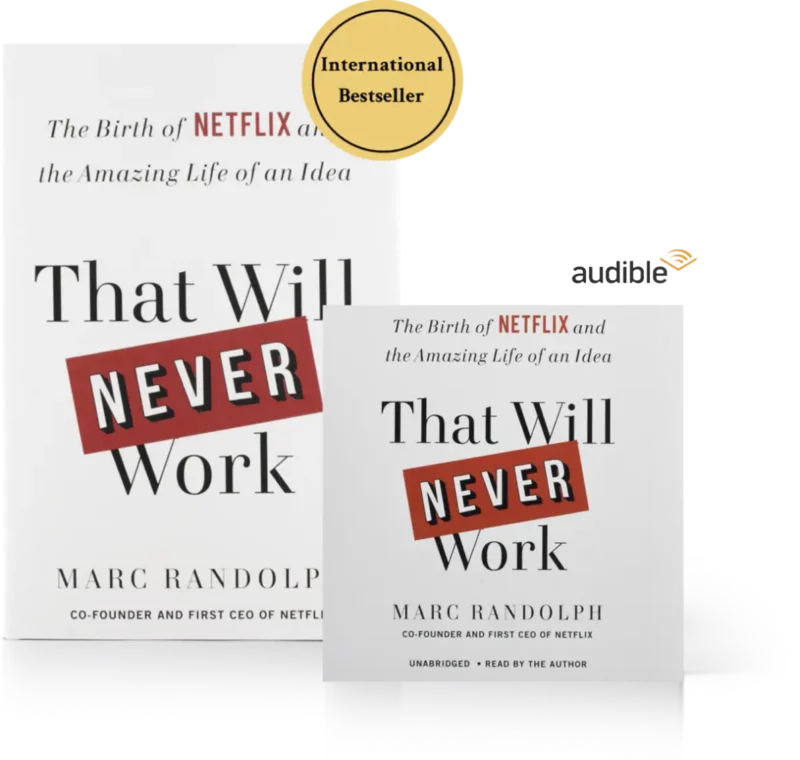Want to be a Disruptor?
Just focus on the market that nobody is paying attention to.

In one way, the story of Netflix taking down Blockbuster is an inspiring one: just a handful of people with no experience in the video industry, using nothing more than imagination and persistence, taking down the biggest video rental company in the world.
But what if you are the 800 pound gorilla? Then it’s a different story, isn’t it? Because then the moral is little different – and a little unsettling. Then this story suggests that the people coming after you are going to look nothing like you. And they are not going to come after the things you do well. They are going to target the things you don’t do well. Or can’t do. Or are unwilling to do.
But that’s the nature of disruption. You never know where it’s coming from. And if it’s done correctly, it’s almost indefensible.
In the spring of 1998, on the eve of Netflix launching its video-rental-by-mail business, the thought that we might eventually disrupt the video industry and take down Blockbuster was ludicrous. Blockbuster was huge: 7,000 stores. More than 75,000 employees. Nearly 5 billion dollars in annual revenue. While we, on the other hand, were a dozen people hunkered down in an old bank building with dirty green carpet. We stored our paltry selection of 900 videos in the bank’s old walk-in safe.
Our dream at that time wasn’t world domination; it was simply to get to the size of a single Blockbuster store, which meant doing about $650,000 in annual revenue. But even that was ambitious. In 1999, Blockbuster boasted of having a store within a ten-minute drive of virtually every major neighborhood in the United States. Why would someone wait three or four days for their video to arrive by mail?
That said, we did have reasons for confidence, primarily because the Blockbuster customer experience left a lot to be desired. Finding things to watch was hard, so most customers gravitated to the New-Releases wall. But Blockbuster purposely wouldn’t buy enough copies, hoping to spread the demand for new titles over several weeks. They called this “managed dissatisfaction”. And you always want to compete with a business that has “managed dissatisfaction” at the core of their business model.
Their even bigger Achilles’ heel was late fees. People hated late fees, but Blockbuster made more than $700 million per year (and more than 15% of their total revenue) from them. Blockbuster was addicted.
But the biggest reason we had confidence in our future is that we planned to disrupt their business by doing something they couldn’t do – or at least would be unwilling to do. We were going to skip renting video tapes entirely. We planned to rent DVDs.
On the face of it, starting with DVDs was a crazy idea. At that time, the total universe of DVD owners was less than half a million households. The VHS universe was more than 100 times larger.
But ironically, this paucity of DVD players was our advantage. With our single internet store – and our single safe-full of DVDs – we could serve the entire United States. A single online store serving 500,000 potential customers made sense. But Blockbuster had 7,000 stores. Which meant that each of those stores served fewer than 100 DVD owners. It didn’t make sense to dedicate inventory, shelf space, and managerial attention to serve so few people.
This dynamic didn’t last long – barely two years – but it was all the time we needed. It gave us a window where we were the only game in town for DVDs. It allowed us to forge the relationships with the DVD manufacturers we would use to drive our early acquisition efforts. It gave us more than our fair share of press. And most importantly, it gave us the volumes of customers we would need to iterate, iterate, iterate until we came up with the no-due-dates no-late-fees subscription model that eventually made us successful.
Stories of disruption almost always start this way.
I recently consulted for a large manufacturer who sold their product using a classic distribution model; they sold their product to distributors; the distributors sold to retailers; the retailers sold to the end users. Everyone was happy. Of course, to support so many tiers of distribution, the price to the end-user had to be high, but so what? They had a monopoly. Where else was a customer going to go?
But then the inevitable happened. A start-up launched a similar product, but rather than take the leader on directly, they bypassed the usual channels and sold directly to end users. The product wasn’t as good, but by cutting out distributors and high-priced salespeople, their prices were about half.
The CEO of the larger company saw this happening and knew exactly how to respond. They would launch their own direct-to-consumer division and use their more powerful brand name and dramatically larger marketing budget to nip this threat in the bud. All good.
All good, that is, until their VP of sales heard about it. “We’re going to compete with our own distributors? You’re going to make my job harder? I’m out of here!”
The next call came from their biggest distributor. “You’re going to compete with me? Find yourself another distributor!”
Soon the entire retail network was up in arms. The direct-to-consumer division idea was shut down before it even started.
And the start-up? They got three good years of market share gains before the larger company finally decided to launch the D2C division they should have launched at the beginning. But by then it was too late.
There are always opportunities to attack this way. When Burger King took on McDonalds, they chose a way to compete (broiling vs frying) that they knew customers would prefer, but that McDonald’s – with its tens of thousands of stores – wouldn’t be able to respond to.
When Apple took on IBM, they didn’t take aim at the business market (where IBM was dominant). Instead, they focused on the relatively tiny niches of education and desktop publishing which IBM wasn’t interested in, a gap that Apple exploited for years, eventually making Apple the second-largest PC manufacturer.
Every large company has an under-defended niche. Consider Salesforce, which generates nearly $25 billion dollars in annual revenue from a myriad of different products and services. Going after their core CRM business? Good luck. But you know there has to be some small corner of their business that’s ripe for the taking. And if that tiny corner is 1% of Saleforce’s revenue, it represents a $250 million dollar opportunity. Certainly, more than enough to justify your full effort. But what resources will Salesforce allocate to defend only 1% of their business?
I recently made an Investment in CardLess, a company that allows small brands and influencers to easily offer their own credit cards. Although this is a service that the large banks could easily provide, they don’t. It’s just not worth their time to do the setup and management of small accounts when they can allocate those same efforts to growing and servicing much larger ones. It’s a niche for now, but I’m willing to bet that winning the niche that no one else wants, is just the first step toward taking even bigger bites of the nearly 5 trillion-dollar credit card market.
As you know, I’m a strong believer in the Canada Principle, which says that any effort spent chasing small opportunities is almost always better focused back onto growing your core business. But it’s the Canada principle which provides new competitors their edge. For every moment the incumbent is focused on their core business, is the chance for a new entrant to start by building the product and service that the larger company is so consciously ignoring.
Want to be a disruptor? Just focus on the parts of the market that nobody else is interested in. Because that’s where the opportunities are.
RECOMMENDED FOR YOU
Want to Make Things Easy for Your Team?
Podcast Episode 72
Is it a Culture Problem or a Hiring Problem?
October 25, 2022 • 38 min
